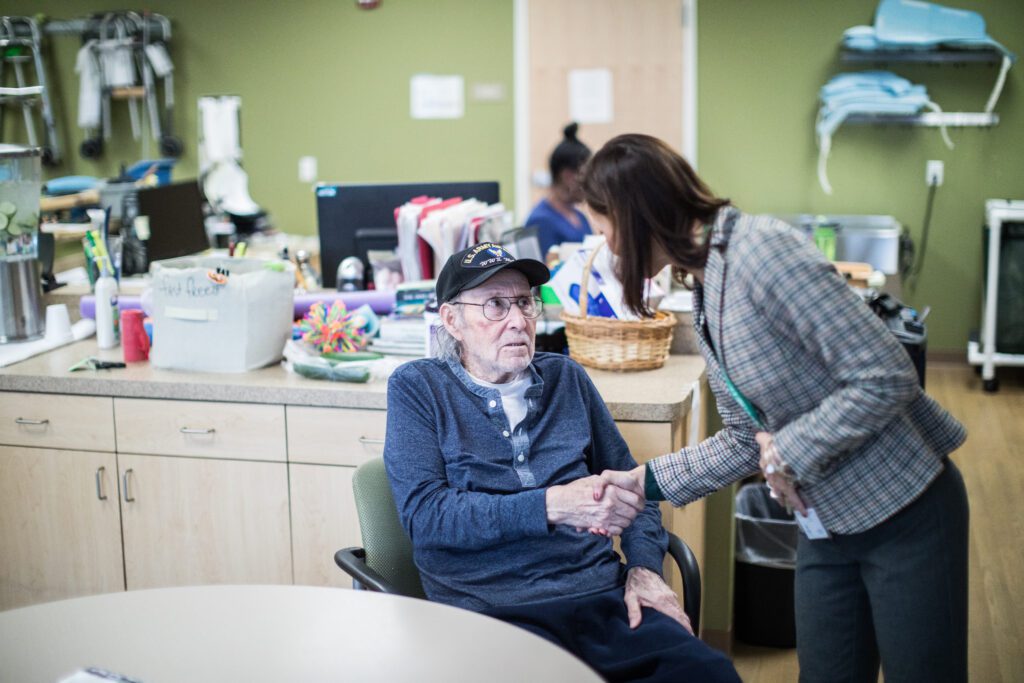
The Health Fund’s Community Health Impact program has long emphasized supporting projects that are community-driven. In 2023, the program is moving even further in this direction to ensure that the individuals and groups affected by a health issue lead in creating solutions.
This shift not only affects what types of projects Community Health Impact will support, but also reflects the program’s evolving commitment to meaningful, authentic, and effective community engagement.
But what exactly does this mean, for us and for our grantees?
To help answer that question, we partnered with the Michigan Public Health Institute (MPHI). In the first phase of the project, MPHI examined a wide swath of reports, articles, webinars, and other materials related to community engagement from all over the country. The resulting environmental scan is a broad look at how organizations across the United States are conducting community engagement.
In Phase 2, MPHI worked closely with eight Michigan organizations to learn how they’re building relationships, pursuing health equity, and sharing power with community members and partners. These deep dives helped identify a set of principles, processes, and practices that can support health improvements that are driven by communities and aligned with their priorities and values.
The Phase 2 report offers a framework for understanding community engagement, complete with recommendations for funders like us, as well as organizations working directly with communities to improve health.
WHAT WE LEARNED
Community engagement is about creating a table with communities to come together—not just listening to what they have to say, but also building long-term relationships and sharing power over important decisions. This is especially important for work that serves people who have experienced discrimination or marginalization.
MPHI’s Phase 2 report finds that successful community engagement can take many forms, but should be aligned with the needs, context, and goals of the community served by the project. The core findings are summarized in several high-level recommendations:
- Build and Sustain Relationships between Organizations and Communities
- Foster Community
- Address Root Causes by Building Community Power
- Change Practices
The CHI team is working to put some of these concepts into action, with several notable changes to our program accomplished and much work still ahead.
For example, our Collaborative Capacity Building grant opportunity is designed to support groups of organizations, institutions, and community members as they build and sustain relationships in support of health-related goals.
Changes to our grant application and administration processes—introducing virtual concept papers, reducing and streamlining reports, and raising allowable indirect cost rates for smaller organizations—stem from a commitment to change practices to promote trust and address the power imbalance between funders and community organizations.
Meanwhile, Community Health Impact’s grantmaking strategy acknowledges historical inequalities and seeks to address their root causes by building community power, with a dedicated focus on eliminating health disparities and improving health equity. This focus is tied to the Health Fund’s vision and strategic plan, which commits to promoting equitable health outcomes for all in our state.
IMPLICATIONS FOR APPLICANTS AND GRANTEES
Potential grantees should consider these engagement concepts as they design projects and submit proposals for funding. Our RFP shares that applicants are required to work with community members in the planning, design, or implementation of the program, with funding priority given to proposals that clearly demonstrate intentional partnership with community members.
That means if you’re applying for a Community Health Impact grant, we’re asking you not only to demonstrate the need for your project, but also to show how your project is shaped by the people who need it, how other organizations and interests in the community have been involved, and how decision making power and responsibility for the outcomes may be shared over time.
If you have questions about how this applies to your potential project, please send us an email.
WHAT’S NEXT?
This focus on community engagement through Community Health Impact isn’t happening in a vacuum—it’s part of a larger journey for the Health Fund with a goal to strive for equity and expand access to health. This work is critical in reaching our shared aspirations and achieving a broader vision of collective impact among the Health Fund, grantees, and the communities we serve.
Want to learn more? Join us for a webinar with MPHI on April 13! We’ll explore their findings further and hear from seven different Michigan organizations achieving deep and meaningful engagement with their communities.
